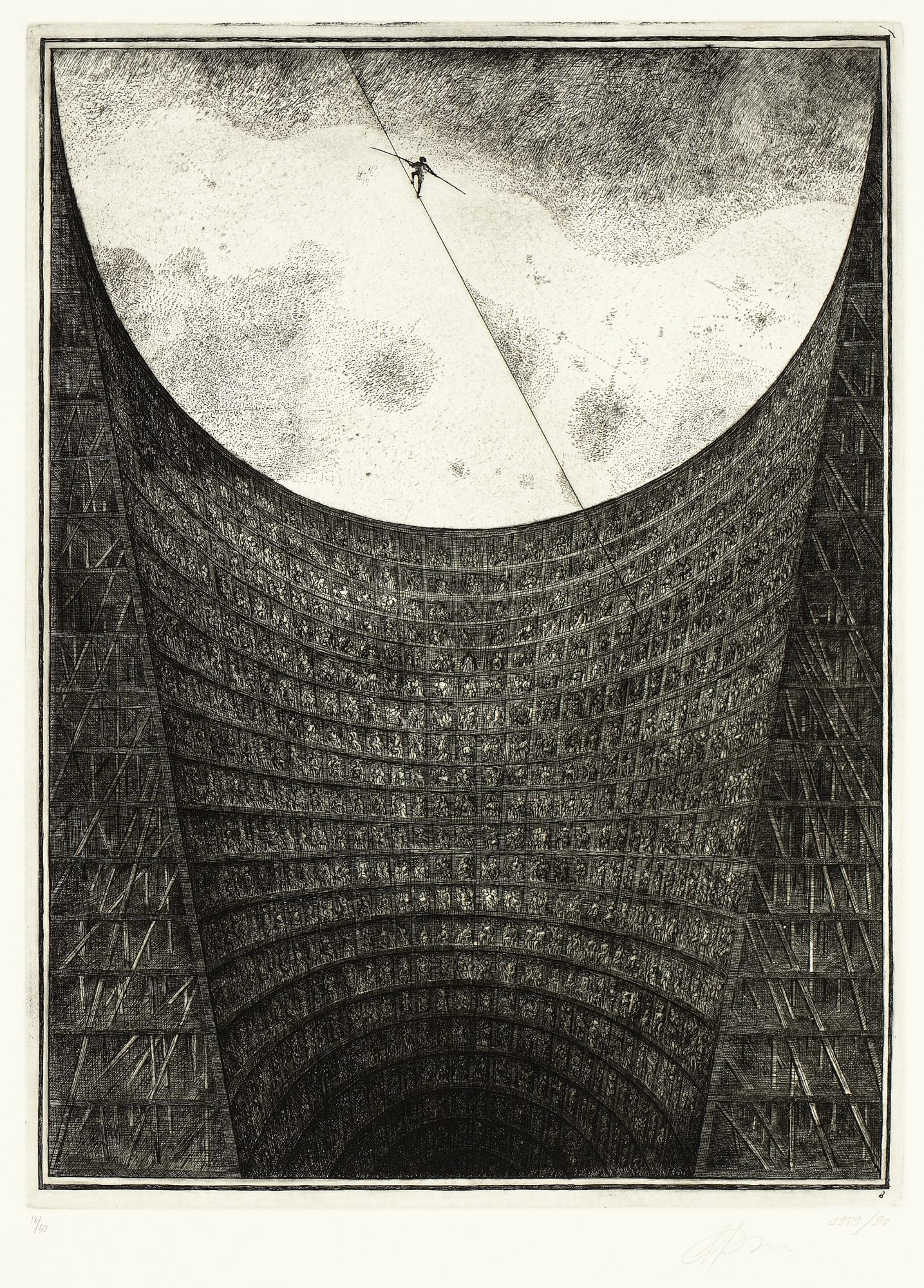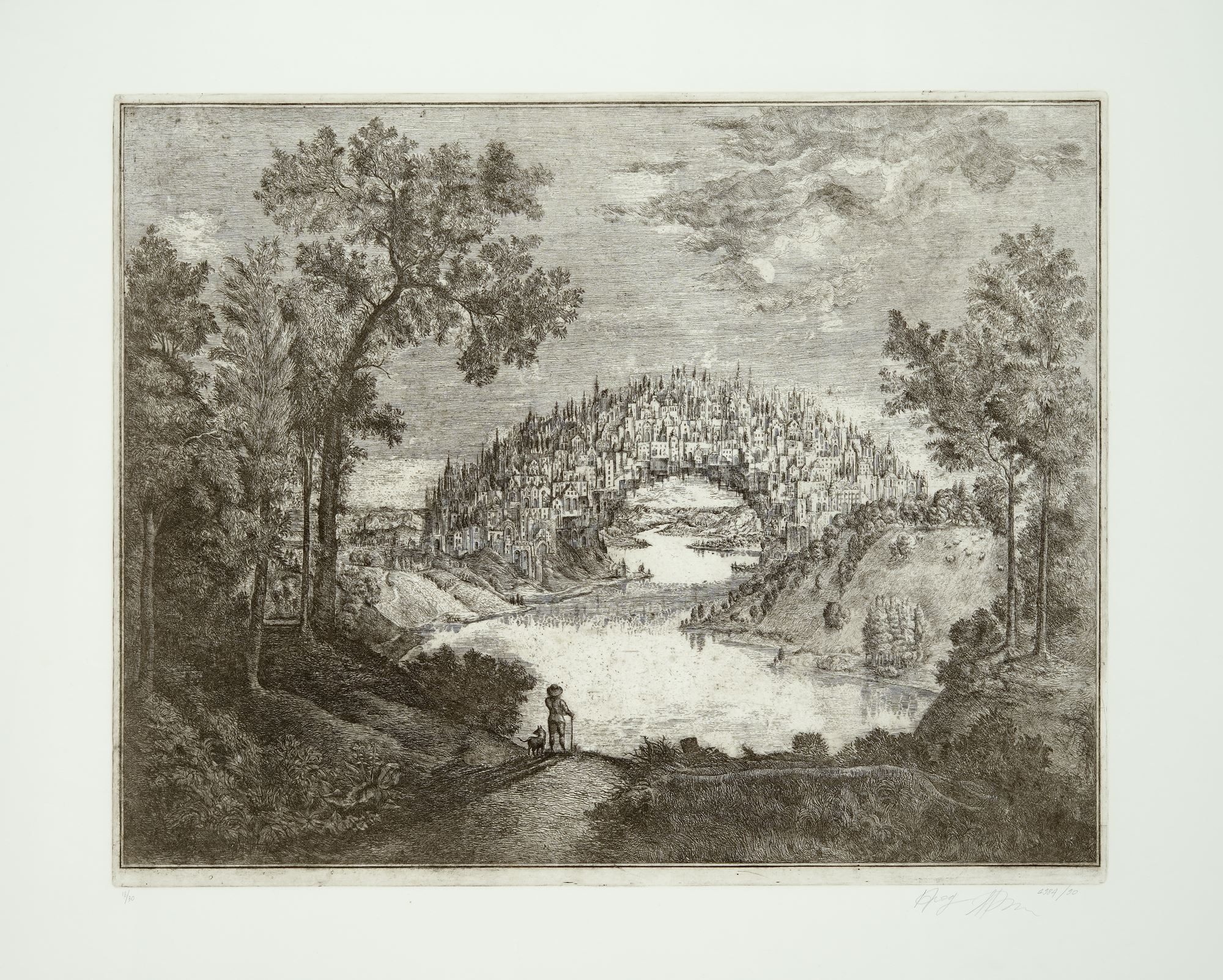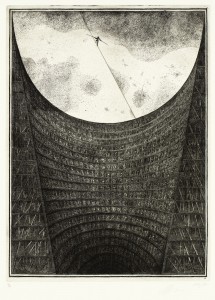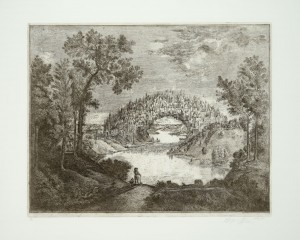Lesson Plan
Day 1
Direct Instruction
Look at the artwork Town Bridge. Ask students:
- What’s going on in this artwork?
- What do you see that makes you say that?
- What more can we find?
- Who are the characters?
- What is the setting?
- What do you see that makes you say that?
Students generate words, vocabulary and find meanings/definitions. Write the words on a triple-column chart, or have students write on their white boards. Can use Internet or dictionary to find definitions. Some students may want to be responsible for looking them up and returning to class later with meanings/definitions.
Guided Practice
Choose one person from the two artworks and writes a narrative of the person’s day, with student input.
Day 2
Direct Instruction
Look at artwork, Amphitheater. Ask students:
- What’s going on in this artwork?
- What do you see that makes you say that?
- What more can we find?
- Who are the characters?
- What is the setting?
- What do you see that makes you say that?
- Students generate words, vocabulary and find meanings/definitions.
Students generate words, vocabulary and find meanings/definitions. Write the words on a triple-column chart chart, or have students write on their white boards. Can use Internet or dictionary to find definitions. Some students may want to be responsible for looking them up and returning to class later with meanings/definitions.
Guided Practice
Pick a person in one of the two artworks. Students will write a story about what is happening for that person from the time they woke up (past) to the present moment, and what will happen later. As a group, discuss time sequence vocabulary and meanings. (Past, present, future, or first, next, last.)
Day 3
Direct Instruction
As a class, look at both pieces of art.
Explain that the students will use the art images to generate singular and plurals. Give students white boards and markers. Demonstrate how to make a long vertical triple-column chart to write their root/base word, affix, and new word, e.g., house/-s/houses or bridge/-s/bridges. We add an “S” when we are talking about more than one object. Have them make a long list, then Think Pair Share- “turn to a partner and read your list to your partner (single and plural words). Check off your word if your partner read the same word. Both partners get to read their lists. Notice if there are some “rule breakers”, like person/people.” (Note: a similar format using these 2 paintings could be used with generating nouns/verbs or finding adjectives.)
Guided Practice
Students work on their writing, or continue writing stories, pay attention to sequence, and conventions. Use interesting details to avoid a bland “listing” of the days events (e.g., Got up, went to school, then went to bed).
Day 4
Direct Instruction
As a class, look at both pieces of art.
Explain that the students will use them to generate prefix words
- A prefix is a part of a word that comes before the base, or root part of the word.
- For example when I say, “Please unpack your backpack,” un- (prefix) plus pack (base word) makes a new word, unpack.
Use ideas from the attached prefix word list, providing the prefix or base words to inspire some student responses.
Give students white boards, and markers and show them how to make a long vertical triple-column chart to write their root/base word, additional part, and new word (e.g., way / mid- / midway). Teacher also uses a white board and shows correct spelling, and reading the word aloud, having students repeat word.
Guided Practice
“Read your story to a friend. Use writing rubric to check for correct use of conventions, punctuations, and spelling. Does your story have a beginning (the morning, middle (present) and end (what happens later)? Edit and rewrite as necessary.”
Day 5
Direct Instruction
As a class, look at both pieces of art.
Explain that the students will generate root (or base words, like when we made prefix words):
- We’ll use root words, then add on to them to make other words, they’re called suffixes.
- For example, we can use the root word, color, and if we add -ful, we get a new word, colorful.
Use ideas from the attached root/base word list, to inspire some student responses.
Give students white boards, and markers and show them how to make a long vertical triple-column chart to write their root/base word, additional part, and new word. Use a white board to show the correct spelling, and read the word aloud, having students repeat the word.
Guided Practice
Students (selected by teacher) share their writing, reading to the group. Group gives positive feedback, ask clarifying questions, say if there are any missing pieces of information, additions or deletions, that would help them better understand the story.
Center practice
Have word lists available (singular/plural, prefix/suffix noun/verb, adjectives etc.). Students write word then use in a sentence. (Template attached)



